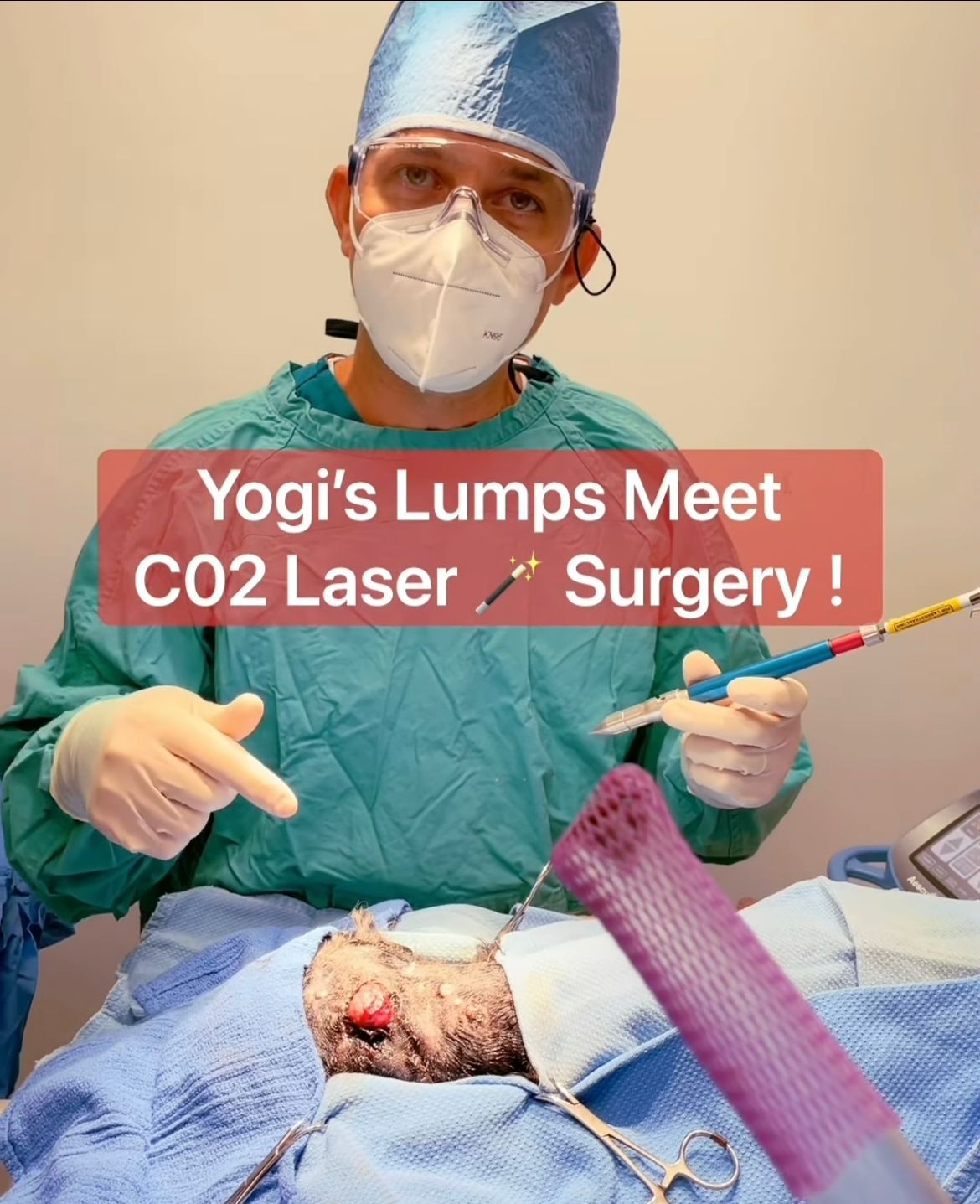Every veterinary practice wants to stand out from the competition, but doing so can be challenging. One option is to add a new service offering, such as grooming, massage, or acupuncture. According to Boaz Man, DVM, owner and medical director of Boca Midtowne Animal Hospital in Boca Raton, Florida, that differentiator could be a carbon dioxide (CO2) laser.
Laser technology has been used in a variety of ways for many years, including in human medicine for the past quarter-century. The CO2 laser is becoming more popular in veterinary medicine because of its advantages in surgery for both veterinarians and patients. At a recent Fetch dvm360® virtual conference, Man outlined the benefits of this type of surgical laser.
Did you know...?
The word laser is actually an acronym? It stands for “light amplification by stimulated emission of radiation.” There are 4 classifications of laser based on their wavelength and potential energy output:
- Class I: Grocery store scanners and laser printers
- Class II: Laser pointers (400-700 nm wavelength)
- Class III: Laser lights shows and some types of laser therapy (eg, superficial lesions and wounds); this class is subdivided into IIIa (visible light) and IIIb (nonvisible light)
- Class IV: Medical/surgical and industrial lasers (800- 1000 nm wavelength)
CO2 lasers today
First developed in the 1990s, the newest CO2 lasers deliver a beam of light through a thin, flexible, hollow waveguide commonly known as a “fiber.” The beam exits through either a pencil-sized handpiece focused by interchangeable, reusable, and autoclavable tips or through a slender, adjustable, tipless handpiece. Both tipped and tipless handpieces have focal lengths of 0.75 to 3 mm and are held very close to the tissue, enabling excellent precision and use in a wide variety of procedures.
“The flexible fiber is amazing because it’s very lightweight,” said Man, who likened using a laser handpiece to using a pen. “You can use a laser in any way you want at any angle without having to worry about any physical limitations.”
Man has used the same 20-W laser at his practice for the past 8 years and has applied it in thousands of surgeries, although he admits he is ready for an upgrade because he wants more power. “The 30-W laser is ideal for use in companion animals,” he says. “It feels just like you are using a scalpel.” Hollow waveguide lasers are available up to 40 W—the highest power commercially available for veterinary applications—but these are reserved for use in large animals such as horses.
Because CO2 lasers generate minimal tissue trauma, postsurgical pain, bleeding, and swelling are all reduced, thus accelerating healing. The laser can be used to seal nerve endings, blood vessels, and lymphatics, giving veterinarians more control over the surgical field. The precision offered by CO2 lasers makes many procedures easier and cleaner. Postsurgical scarring is reduced as well. With CO2 laser surgery, hospitalization time will be shorter and the patient will not require as many bandages or rechecks, saving both your team and your clients time and money.
Laser hazards
It is precisely because of how well CO2 lasers work that they are potentially dangerous. Therefore, it is vital that all personnel involved in laser procedures understand how the equipment works and comply with all associated safety guidelines, including personal protective equipment.
Hazards related to the use of CO2 lasers can occur following direct contact with the laser beam as well as from environmental contamination when the laser comes into contact with tissue. Potentially serious skin and eye injuries can result from direct or reflected beams. “These [beams] can do damage if you are not careful,” said Man. “Just like you wouldn’t wave a scalpel around, you always need to make sure you are using the proper precautions when using a laser, including protecting your eyes.”
Environment-related hazards include the production of airborne contaminants and ignition of flammable substances in the surgical suite. The laser is equipped with an evacuator that is triggered each time the device is fired. “It’s a clean way to evacuate the smoke without contaminating the air,” Man said.
A final note of caution when using CO2 lasers: Do not use alcohol for surgical patient preparation. “Lasers and alcohol don’t mix,” Man said. “Use sterile saline instead.”
What makes a good surgical laser?
If you are in the market for a surgical laser, it is important to know what
to look for. Man suggests answering these questions before making
a purchase:
- Does the laser cut/vaporize cells efficiently?
- Does the laser help control bleeding while also helping to eliminate it?
- Is this the ideal laser to meet my patients’ needs?
- He also recommends looking for positive testimonials and references for the company and equipment and avoiding vendors that do not have well-established service capabilities.
To learn more about surgical lasers, Man advises reviewing case studies, many of which can be found on the Aesculight website, aesculight.com/ case-studies, and reading the special 2019 veterinary issue of The Journal of the American Laser Study Club.

